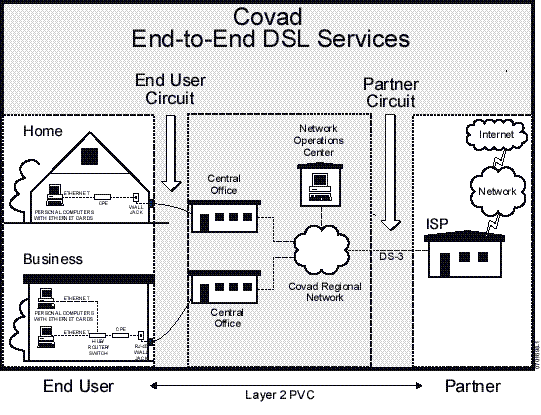| |
Typically 3 or more entities must collaborate to form the supply
chain to deliver competitive telecom services, although the customer
usually deals with only one directly. When this supply chain is
delayed or interrupted, it causes harm to every entity involved.
We call this the Chain of Pain.
|
| |
The Chain of Pain refers to the binding links between the Customer,
the ISP and a competitive DSL provider (CLEC) when thecustomer orders
competitive DSL and the far-reaching negative impact the Bells (ILECs)
have on the entire DSL process. For example, if Verizon claims a
building has no available copper wires for DSL – not only is
the customer denied service but also the ISP and competitive DSL
provider lose that revenue.
|
| |
To spur competition, choice and innovation, the 1996 Telecommunications
Act mandated that parts of the telecommunications infrastructure
including the copper wires that run to nearly every home and business
in America be shared and accessible to competitive providers of
telecom services. These parts are called the "unbundled network
elements" (UNEs) and the incumbent local phone monopolies agreed
to open their networks in exchange for a chance to offer long distance
services.
|
| |
However, without access to "unbundled network elements"
potential competitors would be required to re-wire America, or at
least the specific areas they want to serve. Not only would this
be cost prohibitive and a nightmare to implement – it would
be decades before such competitive services could be available.
|
| |
As a direct result of the ’96 Telecom Act, competitive telecommunications
companies exploded, offering new services like DSL, by utilizing
these local telecom facilities. The incumbents phone companies,
however, have made this a difficult and often impossible proposition.
|
| |
As the diagram below shows, all customers and competitors are dependent
on the local phone company for the connection to the customer and
since the Bell companies control the wiring, they also control the
installation and delivery of service.
|
| |
Customer home ‘ ILEC Central Office (CO) ‘
DSL Provider (CLEC) colo equipment in CO ‘ circuit to CLEC network
‘ ____________SP ‘ Backhaul circuit to Internet
 |
| |
This supply chain is not apparent to the majority of end customers.
All too often, when a customer uses an independent ISP or CLEC,
they do not understand that the ultimate ruler of their DSL fate
will be the Bell company -- since the Bell owns and controls the
phone network wiring and access to it. All to often they call their
ISP with install problems, yelling at the ISP who has taken their
order – but the ISP cannot even contact the phone company directly,
since their direct relationship is with the CLEC. The ISP, if they
are good at customer services, will take the time to educate the
customer on this process even before they order the service. But
this seems to be the exception more than the rule.
|
| |
Exacerbating this problem, when the customer wants to complain
they need the corroboration of the entire chain. Remarkably, despite
3 years of DSL horror stories, this enforcement system does not
yet exist on the federal or state level!
|
| |
|

